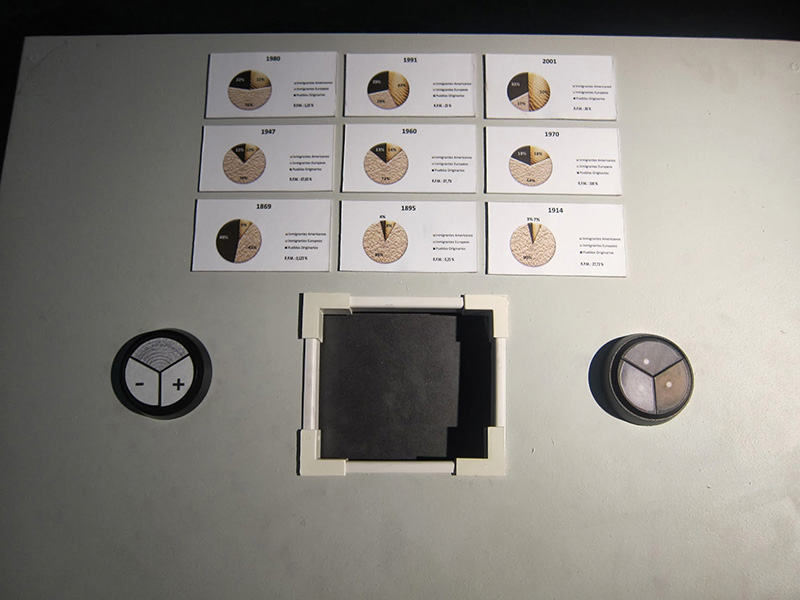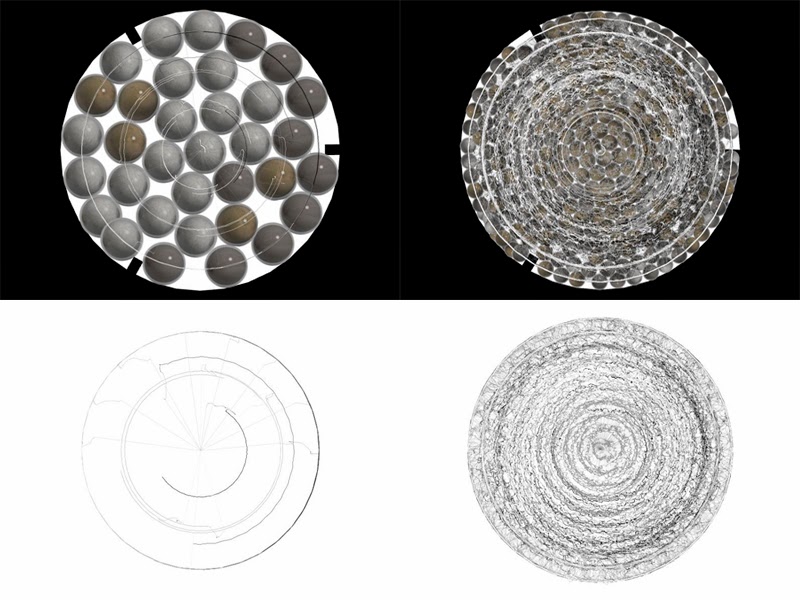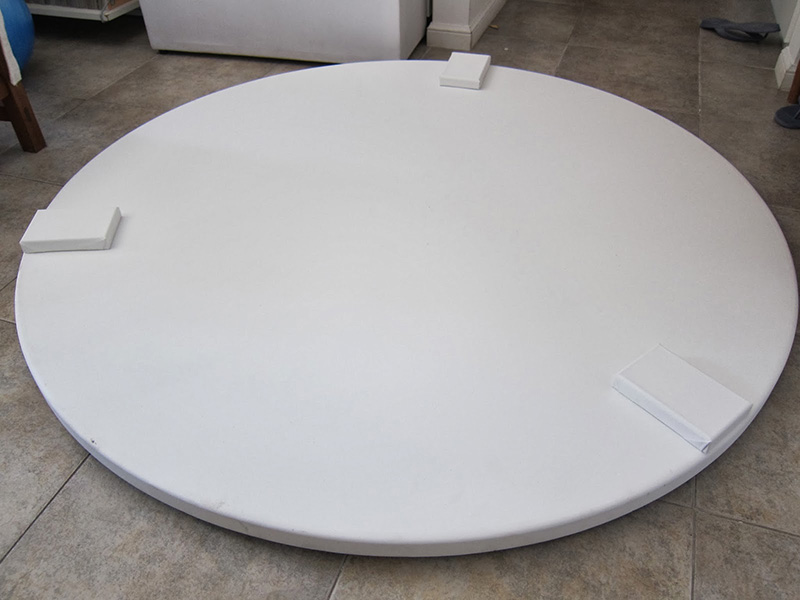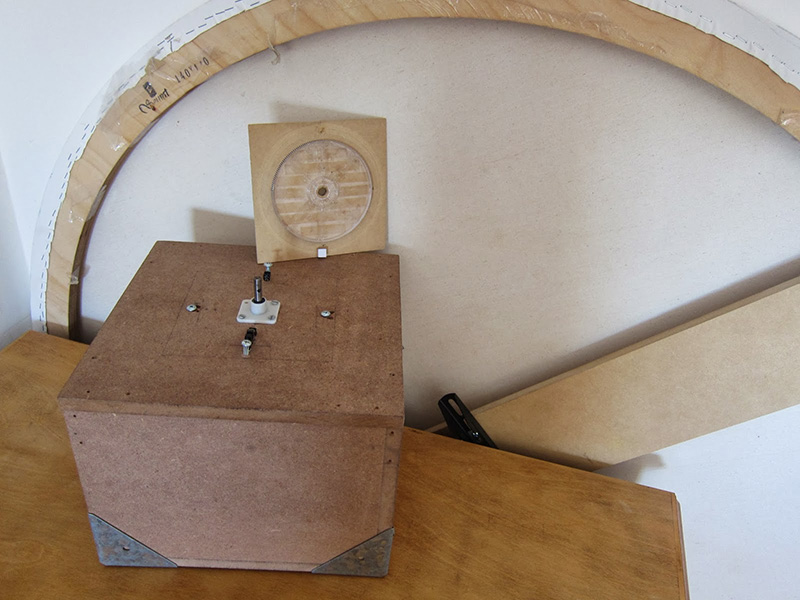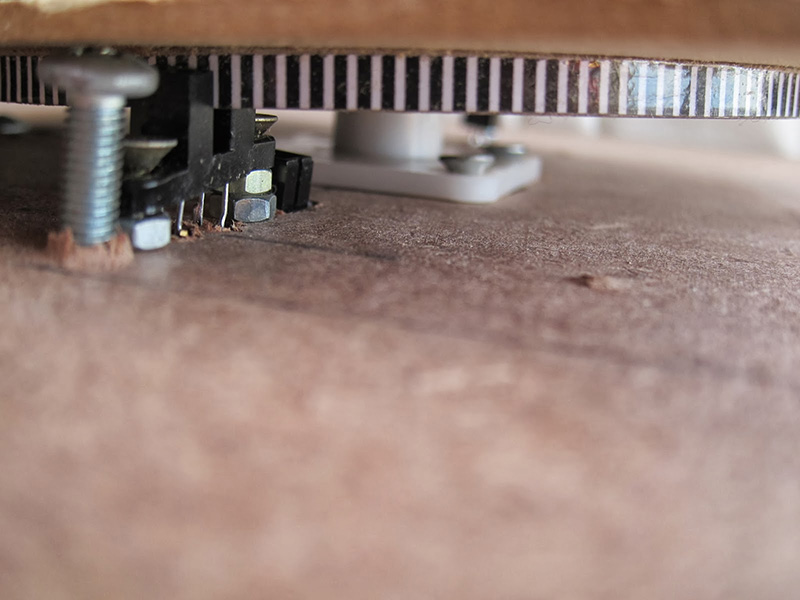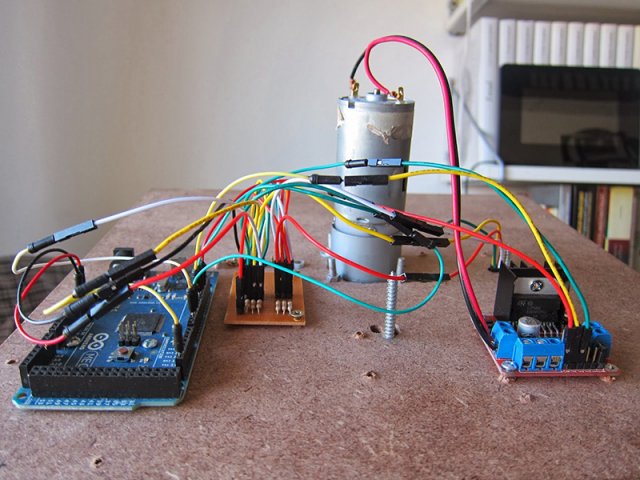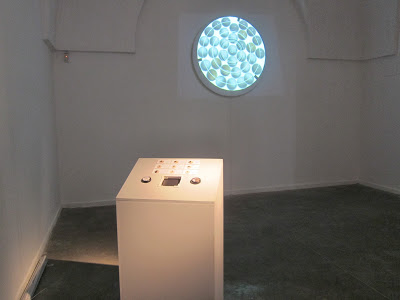Social Substrates (Systemic-Mechanistic): Attractors
2013
Digital Art * Electronic Art * Generative Art * Interactive Art * Interactive Installation * Videogame * Videomapping * Data Visualization
Videomapping on a rotating structure with a circular fabric frame. Board platform with touchpad and arcade buttons.
Software: Processing and Arduino.
Hardware: PC, Arduino, DC gear motor, projector, Wi-Fi touchpad, arcade buttons, incremental optical encoder.
Description
This interactive installation is an information visualization project based on the data supplied by the ten censuses in the history of Argentina. Where the data of European immigrants, Latin American immigrants and the original peoples of Argentina are mainly related, symbolically represented by spheres rendered in 3D with textures of earth, sand and lime. The history of the relationships of each sphere leaves a linear trace, generating drawings that manifest themselves in the form of attractors.
In the installation there is a dialogue between the mechanical and the logical, by means of optical sensors the mechanical device communicates with the electronic one, which in turn responds accordingly, giving feedback to the real and simulated physics.
Process and Operation
The installation is made up of a circular fabric frame intervened with small frames that act as mixing paddles. The frame is hung on the wall on a wooden structure with a motor that allows it to rotate. Renders of acrylic spheres containing textures of earth, sand and lime are projected on the frame. Real small racks simulate collisions with virtual spheres, mixing them.
A platform acts as a command panel, from there you can control the visualization of the data of the different censuses and manipulate the position of the spheres manually. According to the selected census, proportions of different spheres related to the data will be displayed, the frame will also rotate at different speeds. From the board you can select what type of visualization you want to see. One possibility is the collisions of spheres that respond to physical properties, another option is to see the routes, the drawings, traces generated by each of these spheres (attractors) superimposed on the spheres or as generative drawings. Each sphere leaves a path and depending on its nature (texture of the substrate) the value of the stroke is different.
Frame
The fabric frame is 1.50m in diameter and is intervened with three small frames that function as physical paddles that push the projected virtual spheres.
A wooden structure works as a support for the frame, this structure contains the motor and the electronics. The frame has a wooden structure that allows it to be coupled to the motor that is contained in the support box. The rack assembly with bracket is mounted on the wall.
Frame Support
The wooden structure that works as a support for the frame contains an Arduino MEGA, a board for the sensors, an H-bridge L298, a gearmotor, optical sensors CNY70, TCST2103 and an incremental optical encoder that I built.
Incremetal Optical Encoder
This encoder works with optical sensors, it is built with an acrylic base of CD supports to which a self-adhesive impression with the patterns is small.
When turning the motor, this encoder allows to pass the information of the degrees of rotation, this information is sent by the Arduino to Processing.
Platform Board
The platform was built to measure, it is also used to contain the CPU of the PC. The board has two circular brackets for arcade buttons (parlor video games) that contain three buttons each, these buttons are connected to the CPU through a Usb Puzzle Plus interface board and allow to operate the software that you program in Processing. The command interface is also composed of a touchpad that allows you to manipulate the waits individually.
